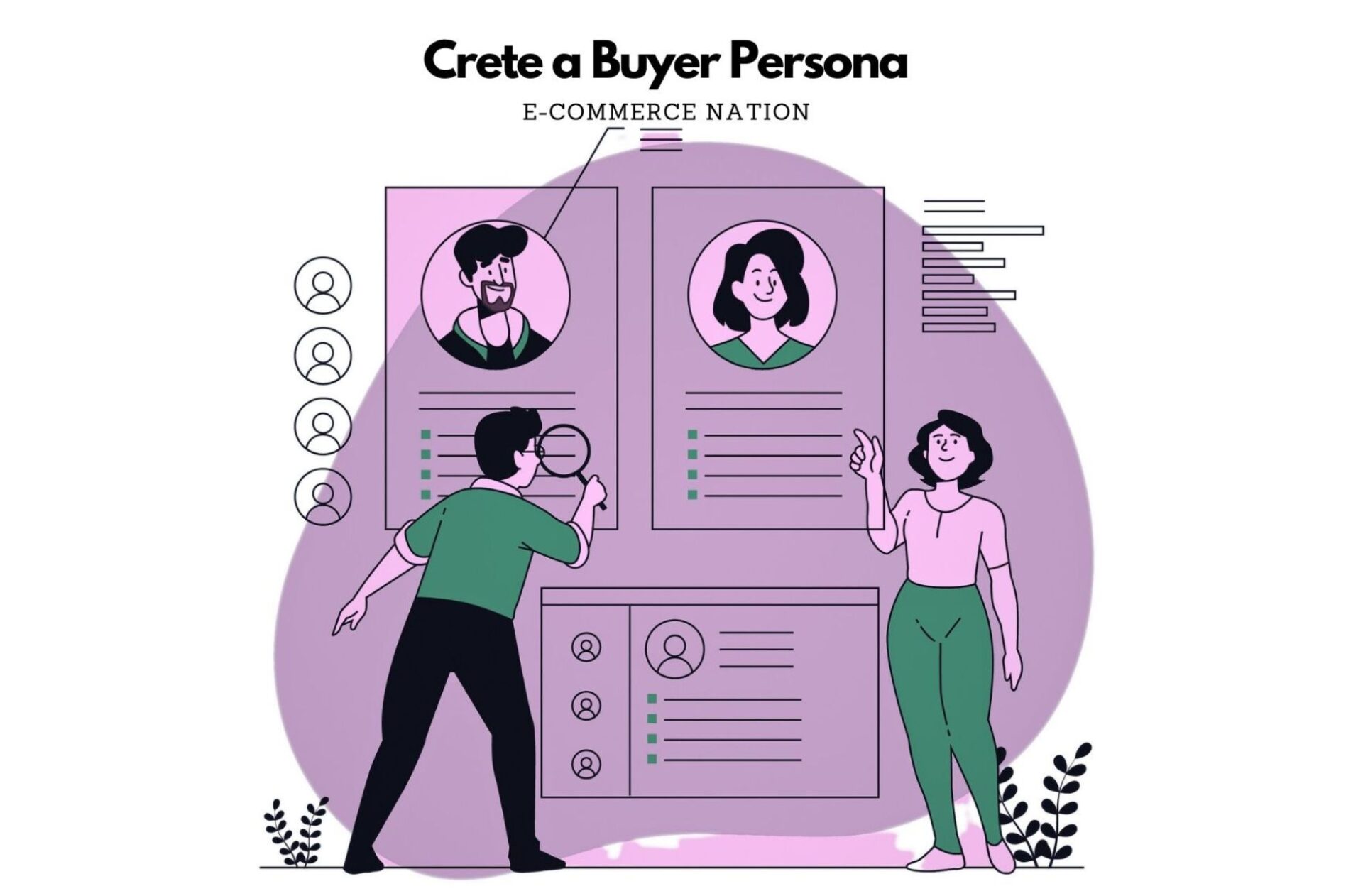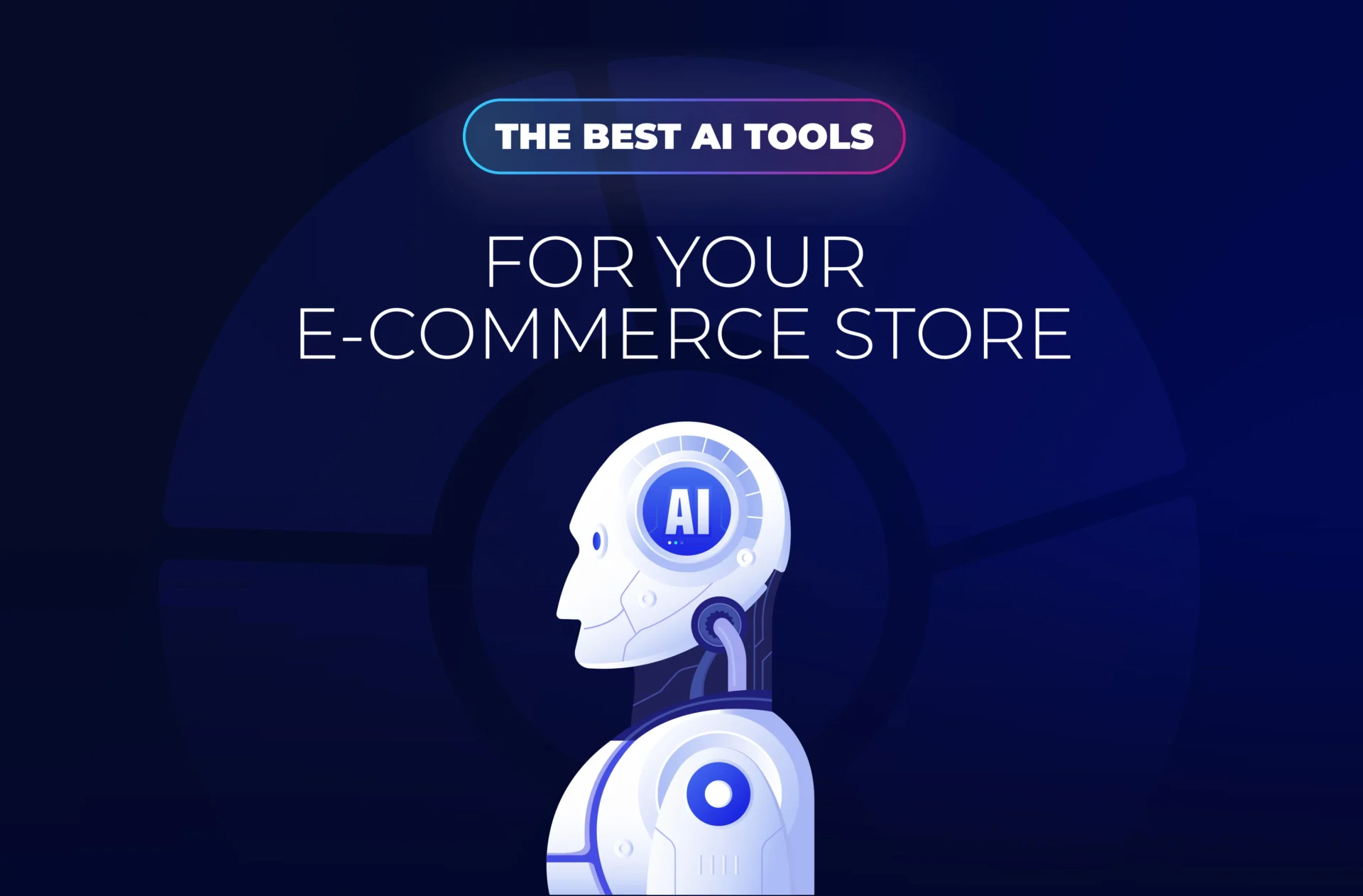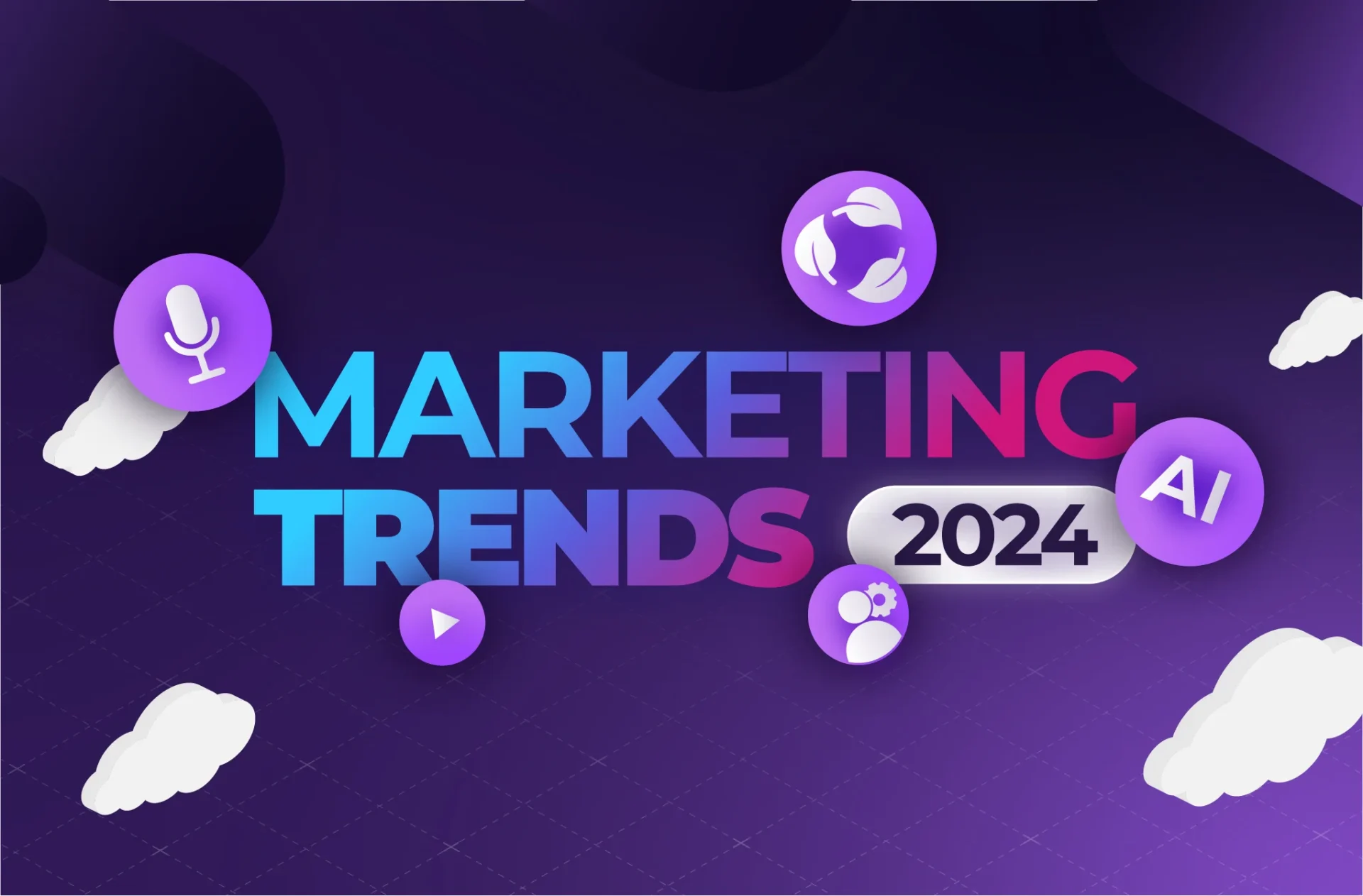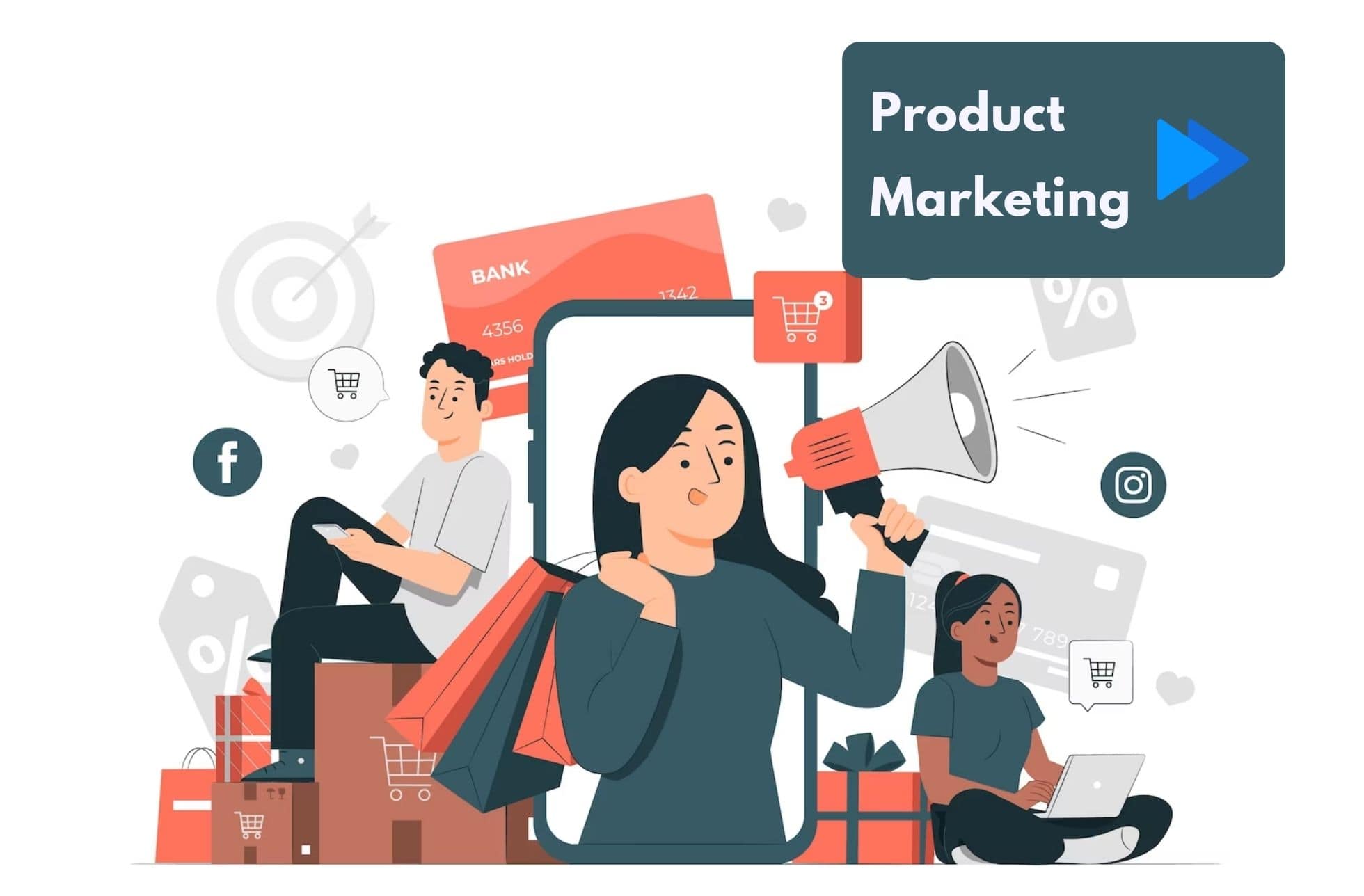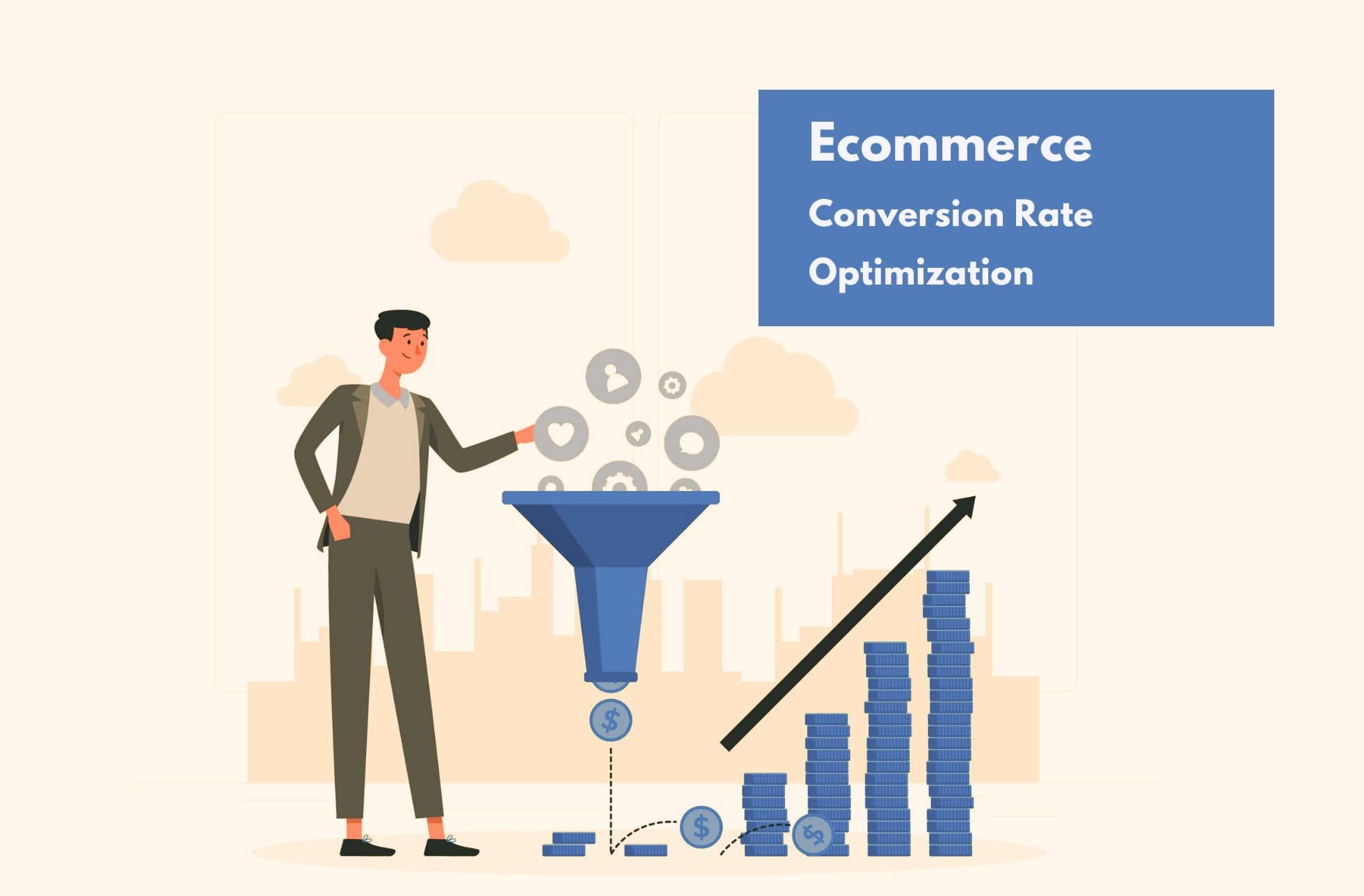My goal is to produce pants that my young cousin Sophia and girls with similar tastes, who are going to college this year, will love, wear, and use every single day.
If you were a fashion designer and had a cousin named Sophia, this goal would be perfectly clear for you, right?
Now try to imagine this one: I want to design a pair of pants that is suitable for young girls between 16 to 19.
Which one is giving you a more clear goal? Which pair of pants do you think will be more tailored based on the target’s needs?
In today’s competitive business world, the answer of most successful experts is that the first one will provide better results. Understanding customers and their needs is the foundation of any successful business.
You need to deeply know who are your customers and what they want. Where simple market segmentation is not as useful as it was, a new tool comes in: the Buyer Persona.
You may come across with customer persona or user persona terms, for now, do not let these minor details and differences confuse you. All these three terms are basically the same concepts with a few little differences which we will discuss later in this article.
Imagine having a crystal-clear understanding of who your ideal customers are, what motivates them, what challenges they face, and how your product or service can address their specific needs. This level of insight enables you to tailor your marketing strategies, craft compelling messages, and create personalized experiences that resonate with your target audience. The Buyer Persona is the tool that provides you mentioned advantages.
We will walk you through defining buyers personas and creating them for your business in this article.
What is a buyer persona?

In the E-commerce Nation, we define buyer persona as a visual and imaginative expression of a person’s personality that represents a part of our customers. In other words, It is a clear fictional description of an individual who we believe can include a considerable amount of our real customers.
A persona can include some or all of these aspects of an individual: preferences, characteristics, preferences, behaviors, desires, mindsets et.
As you can see in the previous picture, a buyer persona looks like a card in which you describe a person on it. It should include which characteristics and details? well, it depends on the business. It should include the aspects that are relevant to the provided services of the business.
Whatever business you have or whatever services you are providing to your customers, you need to remember this quote all the time:
I am not the audience of my own product/service/content/etc!
It is very common to assume that the targeted audience has the same mindset as us. This can be a very dangerous assumption that can affect the whole business negatively. Your business is here to satisfy your customers’ needs.
That’s why you need to understand what they really want. Each persona that you create can give you a clear and graphical image of a share of your customers. The number of personas you need to cover most of your customers depends on your business and your budget. Since creating and verifying your personas can be time-consuming and expensive, you can not afford to have a lot of them.
Buyer Persona Examples
The best way of understanding what is a buyer persona is by examples. In this part, we are going to see 2 different personas for the same company (all the names and products are fictional). Let’s assume we are the company that produces cutting the edge wireless earphones. We are launching a new product and we need to understand our targeted customers in order to plan our marketing strategies and customer relationship services and provide better services to them. To do so, we have created 2 buyer personas.
Our first persona’s name is Luise Dupont and the other one is Emilia Blanchi. Take your time and read it carefully. After reading this, you will probably have a projection of Louise in your mind. From now on for example if when we want to run a campaign for customers similar to Louise, we will know we are talking about a real person with these characteristics.

As you can see in this buyer persona example, this lady is around 40 years old, married, and lives in Paris. We analyzed her personality and characteristics on some major aspects that are “relevant” to our business and affect our interactions with her including:
- Demographics
- Needs
- Characteristics
- Shopping habits
- Pain points
Be aware that this persona should describe a considerable amount of our targeted customers (buyers). For example, it can describe 10 percent of our target market. Creating a persona for a few people is not useful and will waste time and money.

Emilia is our second persona. As you can see, there can be some similarities or differences between these personas as is the case in real life for our real customers.
From now on, if we want to run a marketing campaign or add a new feature to our products, we can say: this campaign is targeting people like Emilia. We need to provide value “X” to please her and convince her to buy more from us.
With these personas in hand, our company can decide on its marketing strategies, customer services, etc., and provide tailored services or products to each group.
These were just two examples of a buyer persona, no rule says it should include which parts of personality or behaviors. Later on in this article, we will discuss how to create a buyer persona and should include which aspects.
Buyer Persona Template
Figma and Canva are two of the many resources that You can find buyer persona templates on the internet. Be aware that you need to customize the description of your personas based on your business. Do not copy everything from buyer persona templates.
Here you can download the Buyer Persona Template we used for the provided examples
Buyer Persona Template 1:
Buyer Persona Template 2:
What is the buyer persona of Apple?
Behind every Apple product, lies a deep understanding of its diverse target audience. It’s important to note that these personas are provided merely as examples to help us understand the concept better. Apple’s deep understanding of its target audience extends beyond these personas.
Meet Sarah Thompson, the Creative Innovator

Introducing John Davis, the Tech Savvy Professional

From creative innovators to tech-savvy professionals, these personas paint a vivid picture of the individuals who connect with Apple on a profound level.
Benefits of Persona
Clear visualization of our persona brings us closer to the customers’ world, ensuring that their desires and expectations are always in our minds. It helps us establish a deep understanding of their needs, enabling us to create tailored experiences that resonate with them.
With the help of buyer personas, businesses gain invaluable insights that pave the way for targeted messaging, personalized experiences, and ultimately, exceptional customer satisfaction. In this section, we will explore the transformative benefits that buyer personas offer, and how they empower businesses to achieve success.
As an example of persona benefits think about these 2 goals:
1- I want to design a sunglass based on mid 40’s women tastes.
2- I want to design a sunglass that my aunt marry and those who have similar tastes, love it and want to buy it.
Which one gives you a more clear goal? You are right, about the second one. In the second one, you are talking about someone you know, someone that when you say her name, you will have a visual projection of her in your mind. Therefore, It is more probable that you can satisfy her needs. Here is a list of benefits of creating a buyer persona:
- Clear visualization of target customers, leading to tailored experiences and enhanced customer satisfaction.
- Enables targeted messaging and personalized marketing strategies.
- Guides product development and improvement based on customer insights.
- Improves customer communication and engagement.
- Supports the creation of relevant and compelling content.
- Helps identify new market opportunities and niches.
- Improves customer acquisition and retention efforts.
- Increases the effectiveness of marketing spend by targeting the right audience.
- Helps align marketing, sales, and product departments’ efforts.
More than mentioned benefits, having a buyer persona can be used in many different activities. cross-selling is one of them. You can read more about this useful strategy in the “What is cross selling and how to use it to increase your sale” article.
You can use your created personas in almost every marketing activity like Social selling and product placement. It is one of the principal pillars of the content marketing strategy. Moreover, this marketing tool is very useful in the process of choosing the right content and platform to run a sponsored content campaign or conducting a successful native advertising strategy.
Buyer Persona Best Practices
When it comes to harnessing the full potential of buyer personas, understanding the best practices is key. Creating accurate and impactful personas requires a delicate balance of analysis and creative thinking. Before you create a persona for your business, you need to decide it should include which aspects or from which segments you want to create your persona. Try to use each of the provided best practices to create useful and accurate personas.
Each persona identifies a group of your audience
The value of a persona is based on the number of instances of it. Although each persona should be a specific detailed description of a person, you should not forget that it needs to be a representative of a group of your buyers. A group that has similar behavior or preferences with the persona.
Name your personas
Consider each persona as a real person with a name. You should practice addressing the customers with their persona’s name. For instance: Today, we want to create something that will delight Emma(s).
Add a picture
For your personas choose a relevant real picture. It helps you and your team to have a visual picture when addressing each persona.
Limit the number of personas
You can never define too many personas for your business. Creating each persona takes time and costs money, therefore you can not afford to spend too much time on creating countless personas. Moreover, there having a limited number of personas, will prevent confusion in the process of providing value to each of them.
Tailor your personas with relevant information
Depending on your needs and type of activity, the persona description changes. Find aspects that are “relevant” to our business. For example, if we are providing a dating app, knowing the marital status is an important factor for creating a persona, but for a clothing shop it may not be important at all.
Be specific and clear
Not every persona needs to describe a large portion of the audience. Although each persona needs to include a reasonable amount of your targeted customers, you have to avoid creating a general one to include half of your market. You should keep the balance between being specific and inclusive.
Segment your market before creating a persona
You need to divide your market into different segments, then you should make sure that you want to create a persona at least for the most important segments of your market. It will help you to focus on the most valuable personas and prevents you to forget about some parts of your market in the process.
Creating a Persona
Determining the specific elements and facets of an individual’s personality to include in a persona is a crucial question that no one can address as effectively as you can. It heavily relies on the nature of your business and the information necessary to enhance customer service.
To facilitate this process, we have compiled a set of questions in this section that can aid you in characterizing your desired persona. Feel free to utilize these questions to accelerate the persona development process.
Note that you don’t need to answer all of these questions, just consider the questions and information that suit your needs.
Download question pool for persona—> subscribe
Demographics
- Age range
- Gender
- Income level
- Education
- Living region or Place of birth
Career Information
- Is he employed?
- Does he work in a public or private group? Profit or non-profit?
- Is he an employee or an entrepreneur?
- How many years of work experience does he have?
- In which industry he works? Is he an expert or a middle manager or a senior manager?
- What skills has he acquired through his job? What skills does he need to succeed in his job?
- How does he feel about his current career path? Does he seek promotion?
Principles and personal values
- How does he describe himself?
- What are his values in his job?
- What motivates him?
- What is he proud of in his personal or professional life?
- Can you write an individual SWOT matrix for him?
Goals, Aspirations, Patterns
- Who can influence this persona?
- Who are his Idols in life or career?
- What does he want from his life?
- How he envisions himself in society or his career?
Challenges
- Here we mean the problems and the challenges that the customer will hopefully come to you to solve them.
- What is his pain point?
- What problems keep him up at night?
- What are the challenges he may face if he wants to buy from you?
- What fears and worries does he have? (Those that are related to your field of work and activity)
Lifestyle
- How is his typical day?
- What is the first priority in his life? Work? Family? His personal life?
- What information do you have about his lifestyle?
- Do you have an estimate of his monthly expenses or spending habits?
- What are his social activities?
- What are his hobbies and how does he spend his free time?
Sources of information and learning
- From what methods and channels does he get his information?
- What media does he follow? What sites does he visit? What blogs does he read?
- What types of media does he consider authentic and trustworthy?
- What type of books or magazines does he like?
Digital presence
- What is his level of access to the Internet? What are the limits on the speed or volume of Internet traffic?
- How familiar is he with technology and at what level is his digital literacy?
- Does this persona have a website or a blog?
- Which messengers and social media does he use?
- How active is he on social media? In which social media does he have an account?
- Does he have an email? How often does he check his email?
- Does he prefer to make his purchases online, or from physical shops?
- If he has online shopping experience, what is the maximum amount he is willing to pay online?
Content preferences
- Which channels does he prefer to access your content?
- What is his preferred content format? Does he prefer text, audio, photo, or video?
- Does he look for news? Or does he prefers entertaining content?
- Does he prefer one-way communication or interactive content?
- Which format of content can you provide to him continuously for a long time?
- Which type of content will not check until forced to?
The relationship of the customer with you and your product
- What is his purpose for buying or consuming your product?
- What is the depth of his relationship with you? (duration, engagement, interactions)
- What criticism do you think he has towards your product?
- What product did he use before your product?
- Why does he prefer you to other competitors?
Buyer persona, Customer Persona, and User Persona
The User is the end user of the product. The Buyer is the person who makes the initial decision to buy the product (or in our case, to install the app).
The main difference is that a buyer isn’t necessarily a user. But they can be. And that’s all there is to it. Therefore, if it is not crucial for your marketing strategies to separate buyers, customers, and users, you do not need to worry about the difference between the buyer persona and the user persona or the customer persona. You can assume that having buyer personas is enough for your business.
From Buyer Proto-Persona to Buyer Persona
Creating accurate buyer personas is a process that evolves over time. It starts with an initial understanding of your target audience, which we refer to as a buyer proto-persona. Think of it as a rough sketch that captures some basic characteristics and assumptions about your potential customers. However, to truly unlock the power of buyer personas, you must refine and validate these proto-personas through research, interviews, and data analysis. This iterative process transforms them into fully-fledged buyer personas that accurately represent your actual customers. By going from buyer proto-persona to buyer persona, you gain deeper insights, sharper focus, and the ability to tailor your strategies to meet the specific needs and desires of your target audience. So don’t settle for a rough sketch—invest the time and effort to refine your proto-personas into impactful buyer personas that drive your business forward.
Key insights
- Understanding and utilizing buyer personas is crucial in today’s business world.
- Buyer personas provide insights into target customers’ motivations, challenges, and specific needs.
- Personalized marketing strategies based on buyer personas lead to improved customer satisfaction and loyalty.
- Buyer personas inform decision-making for product development, marketing campaigns, and customer service initiatives.
- Buyer personas foster collaboration and alignment within the organization.
- Buyer persona enables businesses to deliver relevant content, enhance customer communication, and boost acquisition and retention efforts.
- Leveraging the power of buyer persona positions businesses for success in a competitive marketplace.
Frequently Asked Questions about Buyer Persona
Roughly how long should your buyer persona interviews take?
The duration of buyer persona interviews can vary depending on the depth of information required. On average, interviews can range from 30 minutes to an hour. Remember, it’s crucial to allocate enough time to delve into your customers’ motivations, needs, and pain points.
How many buyer persona interviews should you aim to complete?
The number of buyer persona interviews you conduct will depend on the size of your target audience and the level of granularity you seek. Typically, aiming for a minimum of five to ten interviews can provide meaningful insights. However, the more interviews you conduct, the richer and more comprehensive your buyer personas will be.
Why should you curate a buyer persona story?
Buyer persona stories are powerful tools for creating empathy and understanding among your team. By curating stories that vividly depict your personas’ experiences, challenges, and aspirations, you humanize your target audience. These stories help align your team’s efforts, inform decision-making, and inspire innovation in product development, marketing, and customer service.
How to create a buyer persona?
Creating a buyer persona involves a combination of research, interviews, and analysis. Start by gathering data on your target audience, including demographics, psychographics, and behavioral patterns. Conduct interviews with current customers, analyze customer feedback, and explore market research. From this information, distill key characteristics, preferences, needs, pain points, and motivations to create a comprehensive persona profile.
Who at your company will buyer personas most benefit?
Buyer personas benefit various departments within a company, including marketing, product management, sales, and customer service. Marketers can tailor their messaging and content strategies, while product managers can develop products that align with customer needs. Sales teams can better understand customer pain points, enabling them to provide personalized solutions, and customer service can enhance their support by empathizing with the personas’ challenges.
Who should be involved in creating your buyer personas?
Creating buyer personas should involve cross-functional collaboration. Include representatives from marketing, product management, sales, customer service, and any other relevant departments. By incorporating diverse perspectives, you ensure a comprehensive understanding of your target audience and gain insights from different areas of expertise. Collaboration fosters alignment and creates a holistic approach to customer-centric strategies.
Image credit: Image by storyset on Freepik

